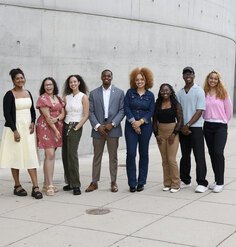Olmsted Scholar Feature: Landscape Architects and the Microbrewery Renaissance
By Lee Streitz, 2012 University Olmsted Scholar
The renaissance of microbreweries is underway. In the last thirty years, there has been a 1700% increase in the number of independent breweries in the United States. Similar to when the number of wineries and vineyards increased dramatically in the late 1990s, independent brewery growth offers the profession of landscape architecture tremendous opportunities to shape these spaces to ensure that they too become sustainable and choice outdoor destinations.
Unlike wineries though, the growth in the number of independent breweries has not been paired with an increase in sales. This dichotomy means that more breweries are competing for a share of a shrinking market, causing the field to become more competitive.
Because of the increased competition, there appears to be a need for breweries to distinguish themselves from their competitors and build customer loyalty through positive, environment- based memories. Research has demonstrated that flagship stores can be valuable tools in strengthening customer relationships and distinguishing one’s brand from competitors (Think of the flagship Apple and REI stores).
While traditional Bavarian biergartens are charming outdoor spaces, which are enjoyed by many, they do little to distinguish themselves from each other. If designed thoughtfully, breweries’ industrial locations could function well as pilgrimage flagship locations, offering a range of dynamic experiences that balance the needs of customers, the environment, and the industrial needs of a brewery.
But why are landscape architects particularly important in shaping brewery locations? Why not charge architects or interior designers with the industry makeover? The quick answer is water.
The brewing industry uses a substantial amount of water in their daily processes. While breweries vary widely in their water efficiency, when calculated liberally, a brewery may produce as much as ten pints of wastewater for every pint of beer. This wastewater has long been considered a nuisance by the brewing industry. Many local water municipalities charge high fees or outright reject brewery wastewater into their systems, as the total suspended solids (TSS) count of particulates may be too high for their system, or the pH levels and temperature may be outside of allowable standards. This means that many breweries have to treat their wastewater onsite through mechanical means prior to sending it down the drain.
With the use of innovative ideas by landscape architects, wastewater can be treated onsite, used to create habitat, and reclaimed to irrigate planted areas on the brewery site, bringing both interest and
sustainability to the space.
Prior to graduation in May, I completed a master’s report at the University of Arizona that examined the use of industrial locations as outdoor amenities for both the brewing industry and their patrons. My project specifically looked at a former gasworks plant in Berlin, Germany to examine its design potential as an industrial adapted reuse project into a brewery, beer garden, community amenity, and dynamic outdoor space. The report also examined the use of constructed wetlands as a means of onsite wastewater treatment that could also create wildlife habitat and function as a community amenity.
After graduating from the University of Arizona in May 2012 Lee moved to San Francisco where he is working as a design associate for Carducci & Associates near Fisherman’s Wharf. Coincidentally, one of his first projects with the firm was working on the design of a brewery and beer garden associated with a Whole Foods in the Bay Area.










